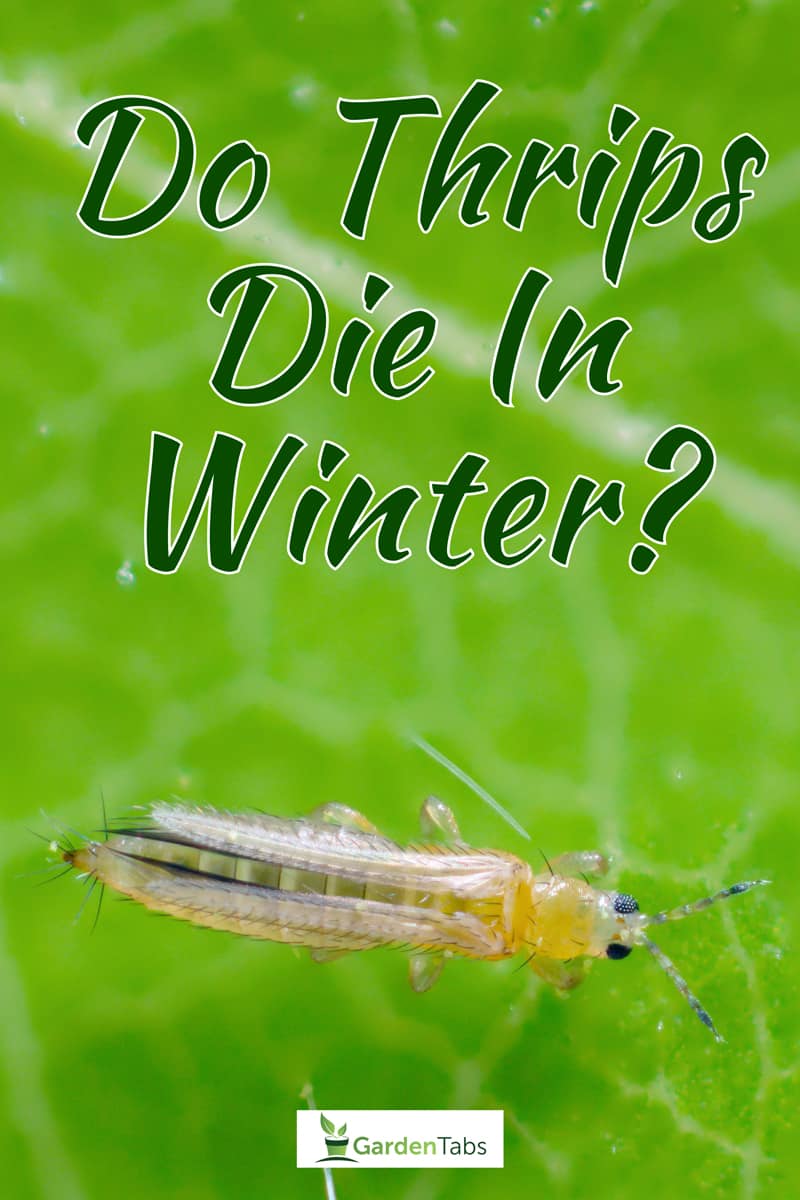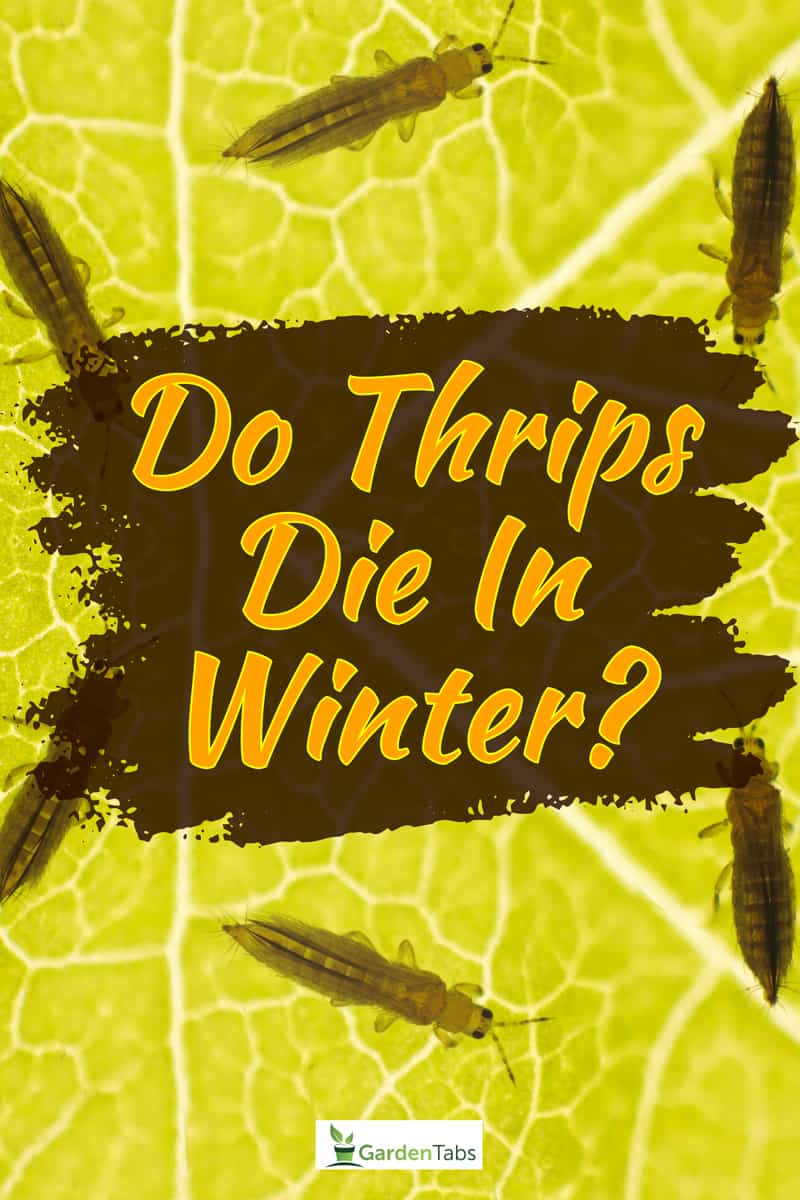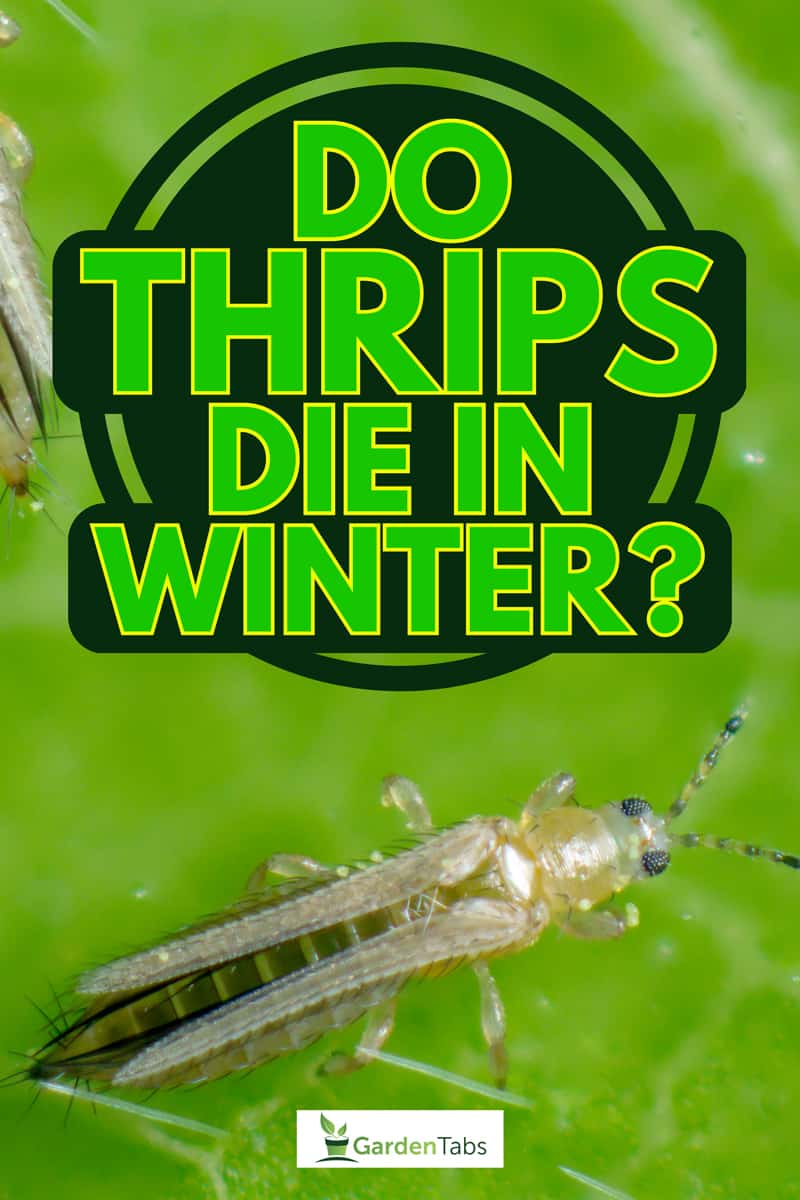Thrips are particularly active in warm weather, making them a real nuisance in the garden or greenhouse. But what about when the cold weather hits? Do thrips die, or do they find ways to survive? We have researched this topic to give you the best answer.
Thrips can make it through the winter by hibernating in soil and plant debris. They will emerge again in the spring when the weather warms up. Some thrip species cannot survive cold temperatures. As a result, their numbers dwindle during this time.
Keep reading to learn more about thrips, how they survive during the winter and their life cycle. We will also discuss how to treat an invasion of thrips.
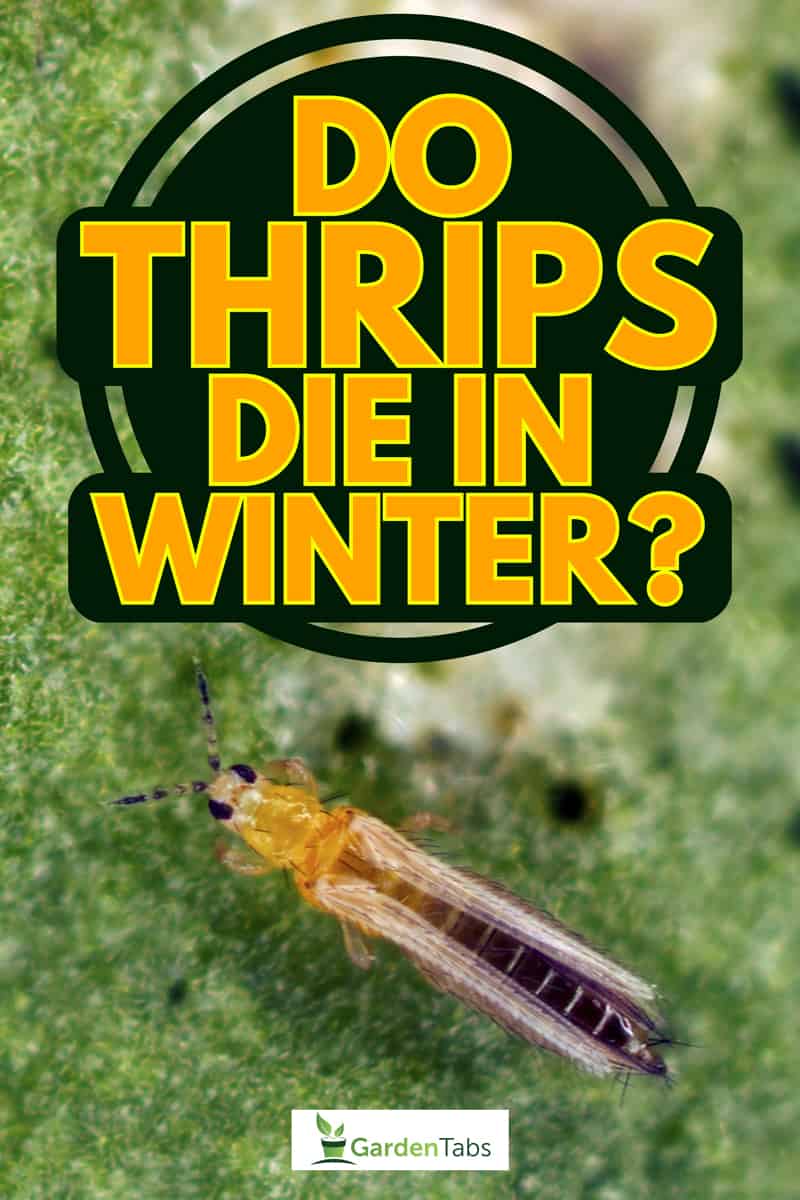
What Are Thrips?
Thrips are tiny, cigar-shaped insects that can be as small as 0.5 to 2mm long. These insects are so small it's difficult to see their bodies without a magnifying glass.
They belong to the Thysanoptera order and can have wings or not. Thrips have small, needle-like mouthparts and are pale brown to dark brown.

Thrips feed on plants and are considered pests of crops and ornamental plants. Larvae and adults use their pointy mouths to pierce and suck the juice out of flowers, buds, and leaves.
Thrips can also make bumps on the leaves or change the color of the petals on the flowers, and it can make the plant look abnormal, like the leaves are twisted or stuck together. Thrip infestations can even make the plant lose all its leaves.
Do Thrips Die In Winter?
During the fall, thrips tend to avoid light and try to find hiding spots in preparation for the winter.
Many species can survive the winter by overwintering in the soil, plant debris, or other protected areas. Leftover plant material that remains scattered around can also be good spots for thrips to live in the winter.
Thrips enter a dormant state during winter and emerge again in the spring when the weather warms up. Some species migrate to warmer areas.
Some thrips species cannot survive cold temperatures and will die off during the winter.
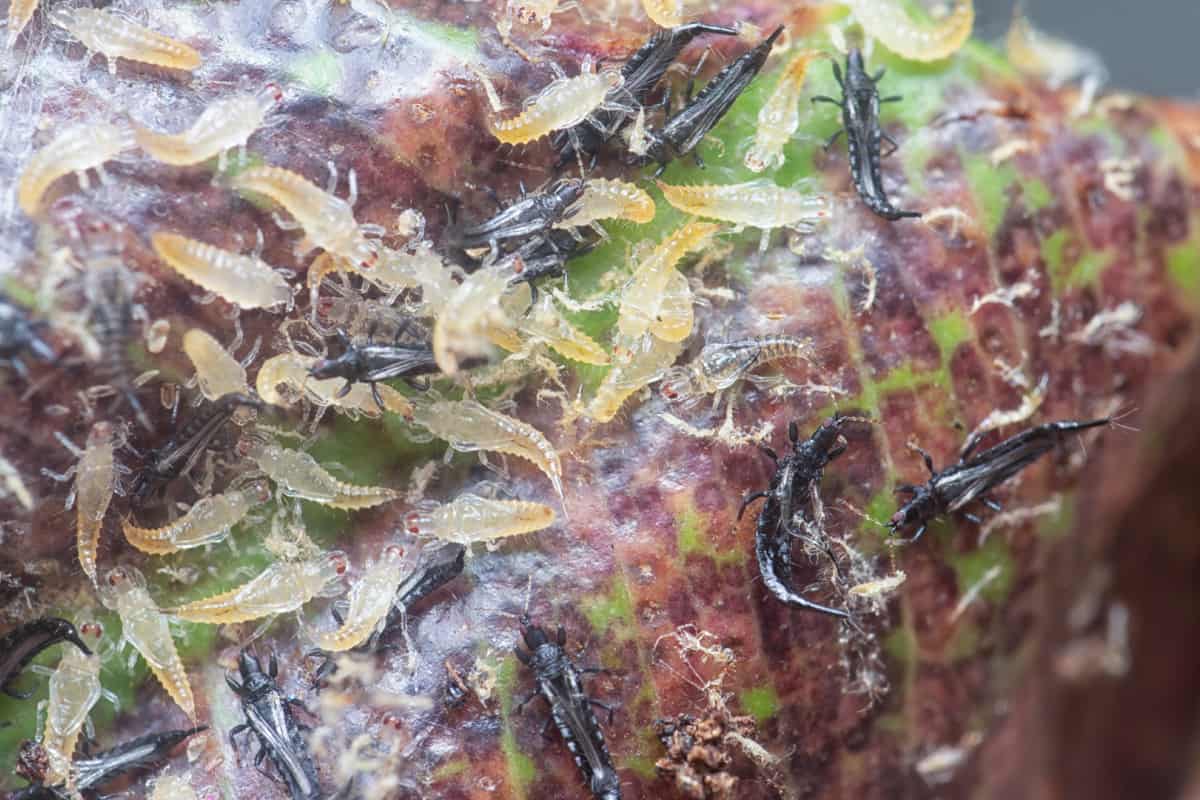
Thrips don't do well in extremely dry or wet weather. They're more likely to die in these conditions than during winter.
Life Cycle of Thrips
Let's look at the life cycle of thrips and analyze how cold weather or winter can impact them.
In the spring, after emerging from hibernation, thrips begin laying eggs. This starts a continuous reproductive cycle that persists until the onset of fall.
Females may mate one or two times. This is sufficient for fertilizing all the eggs they will lay. Adult female thrips can live for approximately 30 to 45 days. They deposit between 150 to 300 eggs on leaf surfaces.
Males attempt to mate multiple times and often engage in aggressive behavior, such as fighting with other males, to secure the opportunity to mate with a female within proximity.
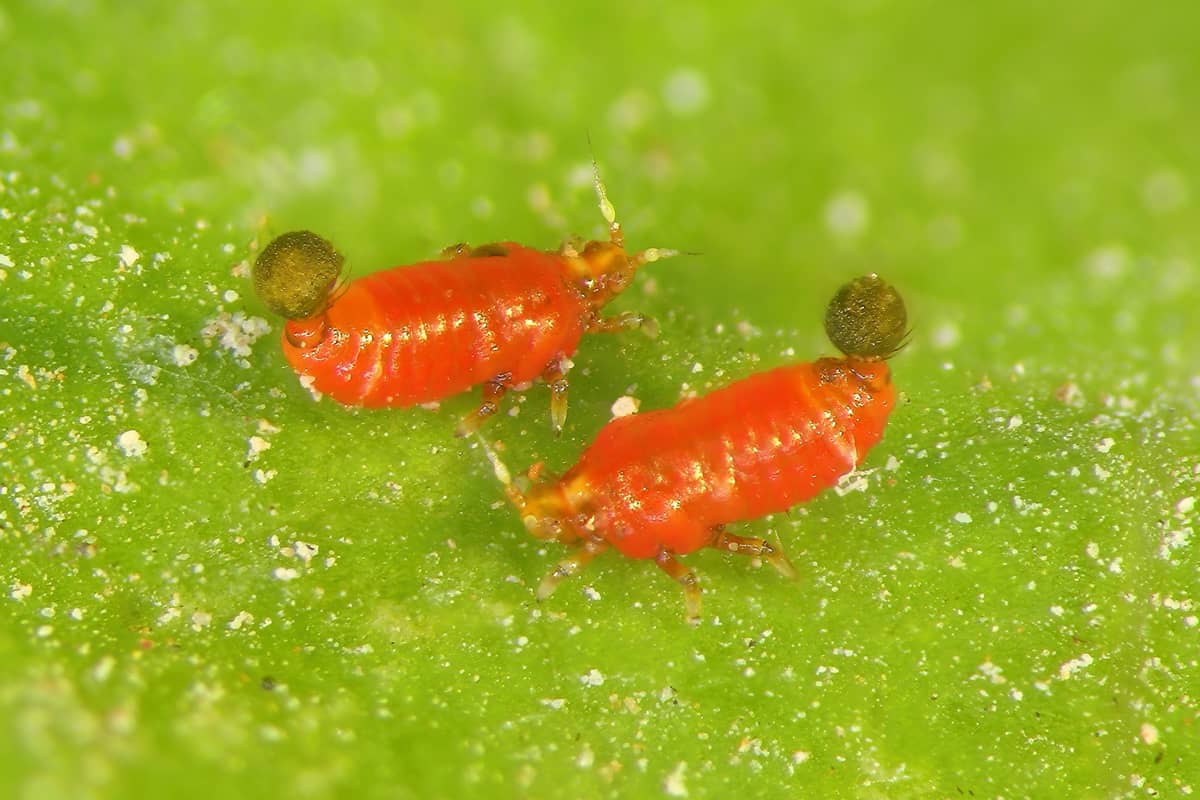
In the first two stages of thrips, larvae are protected by the delicate young plant tissue, where they feed. Afterward, the larvae stop feeding and descend to the ground to pupate, which is the process of becoming adult thrips, and it takes about two to five days, depending on the temperature.
Temperature affects the thrips life cycle, which takes place between 50 to 90 degrees Fahrenheit. Thrips can withstand temperatures below 50 degrees Fahrenheit but won't develop.
Thrips have a potential lifespan of up to two months from eggs to death, provided they remain active. However, their lifespan is greatly affected by temperature, as warm temperatures can decrease it while cool and mild temperatures can increase it.
During the winter, their development may be disrupted, so they hibernate until spring arrives.
What Damage Can Thrips Cause?
Thrips have a diverse diet and consume various plants, including popular greenhouse crops such as chrysanthemums, roses, marigolds, ivy, hibiscus, and numerous others.
Thrips use their specialized mouthparts to extract plant juices and cause damage to flowers and leaves by causing the collapse and deformation of plant cells.
Thrips can cause stunted growth in plants and result in damaged leaves that appear fragile and distorted. They can also cause the development of tiny pale spots, known as stippling, and cause leaves to drop prematurely.
Although thrips may cause noticeable discoloration and damage to plants, such damage is typically only cosmetic and rarely fatal.

In addition, thrips can cause even more harm indirectly by spreading two closely related tospoviruses. Tospoviruses are spread by arthropods and are among the most destructive plant viruses. Thrips can carry these viruses from one plant to another.
Young plants are particularly vulnerable to tospovirus infection, and there is no cure once the virus has taken hold.
How To Treat Thrips
Dealing with thrips can be an inconvenience. They're minute, which makes them hard to detect. On top of that, they reproduce fast, and you can end up with a full-blown infestation in just a few days.
Here are ways that can be effective in getting rid of thrips:
Isolate Plants That Have Been Affected
Identify the affected plants and then isolate them. Keep a close eye on nearby plants to see if they've also been infested, and if so, treat them promptly.
Thoroughly Wash Affected Plants
Wash down the entire plant with lukewarm water, including the underside of the leaves. Next, apply a light lather of insecticidal or dishwashing soap to the plant, and let it sit for about half an hour.
Finally, rinse off the soap thoroughly to ensure the thrips have been removed.
Click here to see this product on Amazon.
Use An Insecticide Spray
For big plants that may be hard to wash, you can use insecticide spray to kill thrips. However, be aware that this will only kill the hatched thrips.
You'll have to spray the plants multiple times. You will need to spray every three days to kill the new thrips as they hatch.
Use A Systemic Insecticide
You can use a systemic insecticide to kill thrips while they feed on your plants. Sprinkle or pour the recommended amount into the soil and water it in.
This is the most effective method to kill thrips that have already taken shelter inside your plant.
Click here to see this product on Amazon.
Use Pyrethrin
Pyrethrin is a natural pesticide that's derived from chrysanthemum flowers. It's an effective solution for eliminating thrips from your plants.
To use it, you'll need to spray the affected plants twice, with a gap of four days between applications.
When choosing a pyrethrin pesticide, check that it's pure and doesn't contain synthetic chemicals. This is safer than using a pyrethroid pesticide, which can harm honey bees and fish if it enters waterways.
Use Sticky Traps
Thrips are drawn to blue sticky traps, which can be placed inside the pot at the bottom of your plant. You can also hang these traps on your plant's leaves.
While this method may not eliminate thrips, it can reduce their numbers.
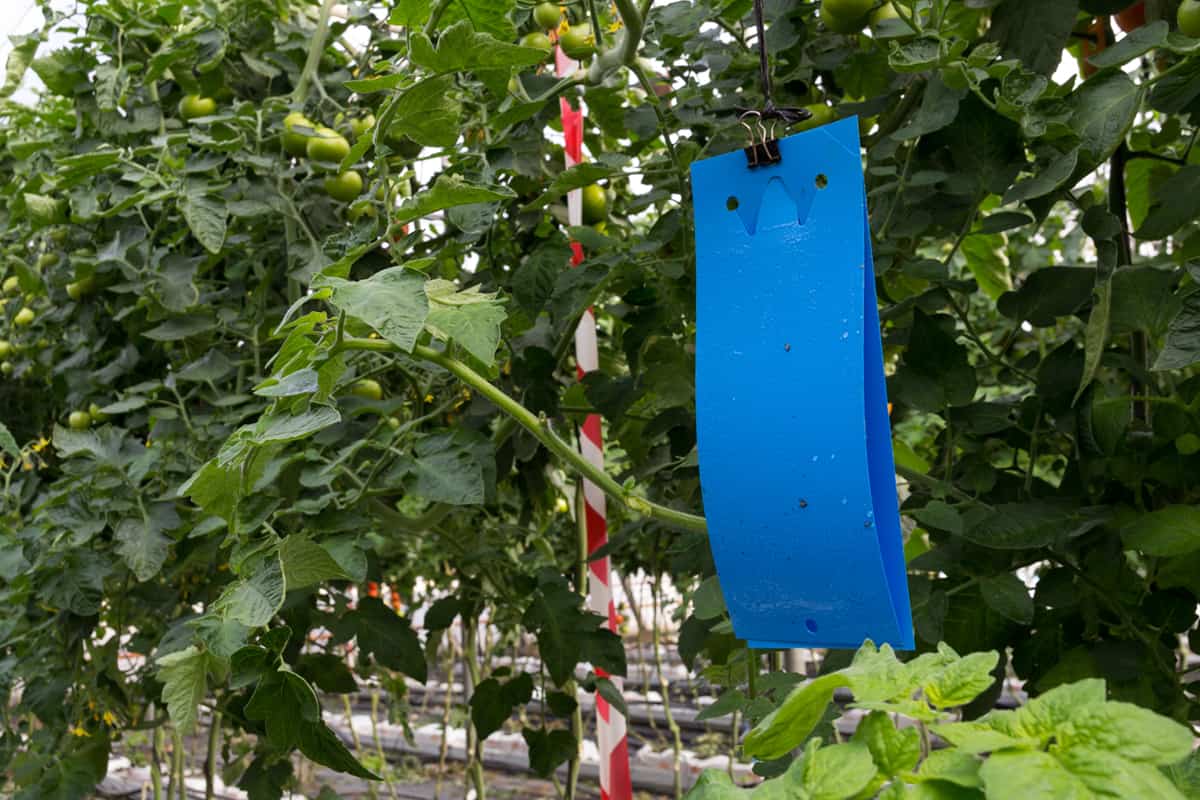
How Do Thrips Infest Plants?
Thrips have wings, but they have limited flying capabilities. They often rely on the wind to carry them.
As a result, they can easily cling to clothing or gain entry through open windows. Thrips can also be on flower bouquets and sometimes even on fruit.
If you've recently bought new plants, it's possible that thrips might have been on them. You should inspect and quarantine new plants before introducing them to your garden.
What Plants Are Most Susceptible To Thrips?
Thrips have become a common problem in many gardens and greenhouses as they spread via plugs, cuttings, and small plants.
These pests can feed on many greenhouse crops, including geraniums, hibiscus, carnations, petunias, roses, marigolds, impatiens, and verbena.
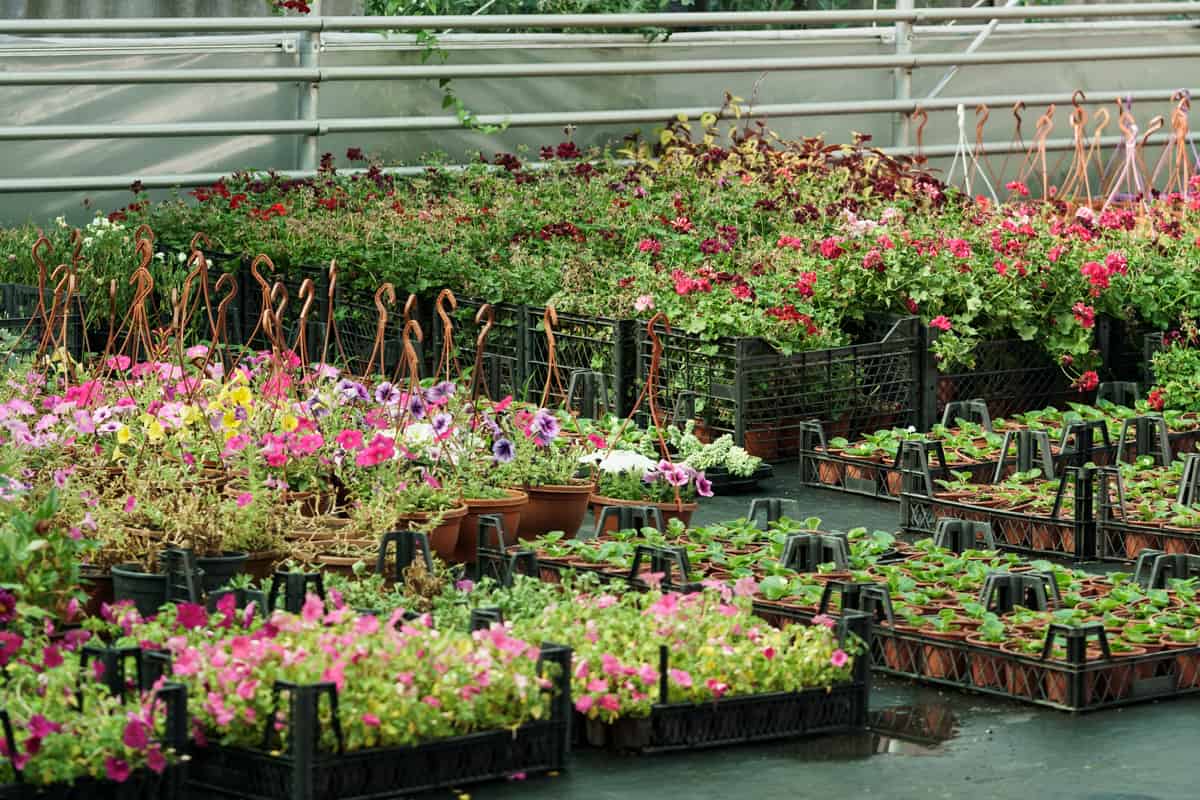
Do Thrips Live In Soil?
Thrips don't typically live in soil for extended periods. While some species of thrips may pupate in the soil for a time, and adult thrips may overwinter in soil, it's rare to find these pests in the soil.
Wrapping Things Up
Thrips are tiny insects that feed on plants and are considered pests of crops and ornamental plants. Thrips can survive the winter by hibernating in soil and plant debris, and they emerge again in the spring.
So if you notice thrips on your plants, don't be discouraged—it's a common problem. Just take action to control them before they become a big issue. Good luck!
If you liked this article, check out these related posts:



